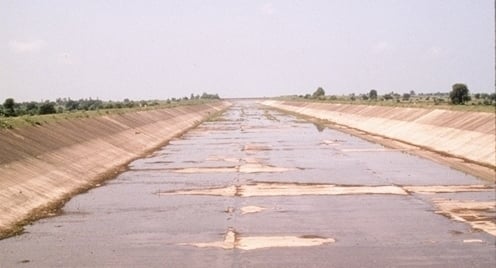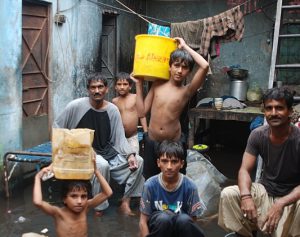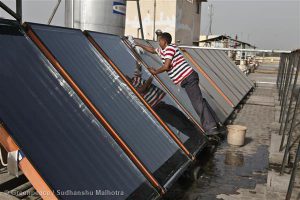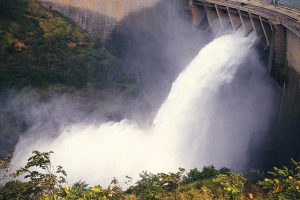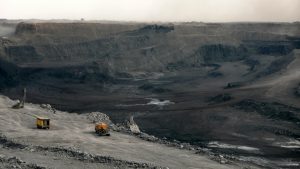The ambitious and controversial plan to interlink India’s rivers, first mooted by former prime minister Atal Bihari Vajpayee almost a decade ago when the country’s ruling Bharatiya Janata Party (BJP) was last in power, is once again being pushed forward by the Narendra Modi-led government — a move that has environmental experts, who label it unscientific and disastrous, worried.
What is India’s river linking project?
The proposed project involves a large-scale engineering intervention to shift water from the Brahmaputra and lower Ganga basins in eastern India to water scarce regions of western and central India through the construction of reservoirs, dams and over 14,000 kilometres of canals. The BJP government has touted it as a cure for the menace of floods and droughts that plague India every year.
India relies heavily on the monsoon for its water needs, so much so that one bad monsoon can ruin the entire year’s economy and agricultural output. The country receives most of its annual rainfall during the four monsoon months – June to September – while the amount of rain varies across different regions.
The project aims to balance uneven water flow in different river basins. However, it has been attacked by environmentalists and water experts who fear that linking rivers would lead to an irreversible ecological disaster. The Congress-led United Progressive Alliance (UPA) government, which followed the Vajpayee rule, had suspended the proposal when it came to power in 2004.
Now, with the BJP back in power, the project has got a new lease of life. Water Resources Minister Uma Bharti has called for fast-tracking the project. “All 30 interlinking rivers projects can be completed within seven to 10 years, provided states agree,” she was recently quoted as saying.
She will also convene a three-day conference from November 20, one day of which will be dedicated to discussion of the interlinking rivers projects. “The event will provide a platform to address the concerns of environmentalist and civil society and clarify issues raised by them,” the Water Resources Ministry said in an official statement.
Of the 30 interlinking projects across the country, 16 projects will be undertaken in the peninsular region while 14 will be constructed in the Himalayan region, transferring about 170 billion cubic metres of water. Apart from this, several other intrastate river linking projects are also in the pipeline.
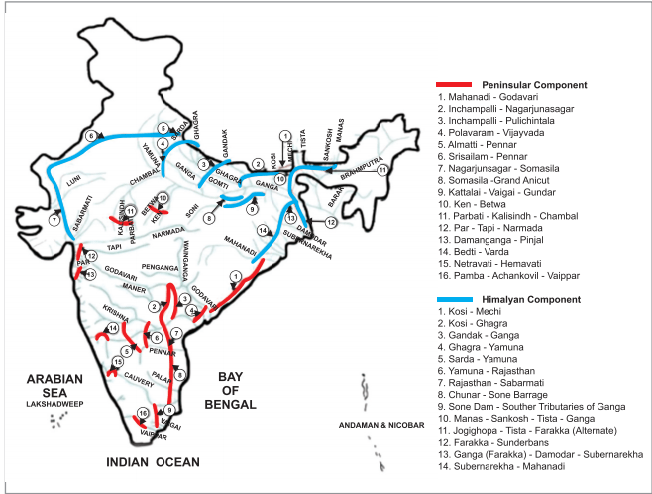
Under the Himalayan section, a series of storage reservoirs, dams and canals will be constructed to bring surplus water from the tributaries of Ganga and Yamuna to the western region of Rajasthan and Gujarat. The Brahmaputra will also be linked to the Ganga.
The government has already announced Rs.100 crore (US$16 million) for a detailed report on the project in its first annual budget and has constituted a special committee to fulfil the promise to link rivers made in its manifesto during the 2014 general elections. This renewed thrust on the project has left environmentalists worried.
They fear the project will alter the natural flow of rivers, cause water-logging, hamper transportation of silt, affect fisheries, submerge forests and reduce water flow in transboundary rivers in downstream Bangladesh.
By diverting water from the Ganga, India would break its formal promises to Bangladesh under the 1996 Ganga Water Treaty — that no water would be diverted away from the Ganga above the barrage at Farakka, a few kilometres from the India–Bangladesh border.
“Even if they say they are not directly diverting water from Ganga, they will in any case divert it from the tributaries of Ganga and it would mean the same thing,” said Manoj Misra, a water activist from the Yamuna Jiye Abhiyaan. “We have the same relation with China that Bangladesh has with us (as the downstream country along a shared river). If China does the same, we make noise. But for Bangladesh, we have nothing to offer beyond words.”
India has long feared China may go ahead with its own ambitious diversion project upstream along the Brahmaputra in Tibet, where it is called the Yarlung Zangbo, although the Chinese government equivocally denies such plans.
Medha Patkar, a social activist and founding member of the anti-dam movement Narmada Bachao Andolan, doesn’t believe the project is feasible: “It will have huge social, environmental and financial impact. There will be a series of dams and each needs environmental clearance. Without sustainability and feasibility studies, I don’t know how they are pushing it.”
Patkar refutes government claims that the project will help keep floods in check: “Only one-fifth of the Ganga flow will be diverted. How can that prevent floods? There is no scientific basis to it.”
Patkar also fears that the project could lead to the privatisation of rivers. “The original estimated cost of the project was five lakh sixty thousand crore (US$91 billion) which must have now increased to eight lakh crore (US$130 billion). Such huge costs will require corporate investment.”
Water experts say surplus water shouldn’t be diverted from a river on such a large scale. The excess water is necessary to keep river basins healthy as it percolates down to the soil, recharges groundwater and moistens soil in the dry season.
According to Misra, one just needs to look at the Narmada-Kshipra link to see how badly disastrous river linking will be if done on a nationwide scale.
Narmada-Kshipra is an intra-state river link that was undertaken to tackle water scarcity in the Malwa region of Madhya Pradesh. As part of India’s first river linking project, water has been lifted over 350 metres and carried over 50 kilometres to the Kshipra river through pipelines using water pumps.
Misra, who visited the site in July this year, told thethirdpole.net: “The project is a sham. They have installed at least four pumps… When I visited, there was no water because the pumps were not working. If this is the case during monsoon season, then imagine what will happen in the dry season.”
Small-scale conservation
Misra believes traditional practices of water conservation, which are effective and also environment-friendly, need to be adopted to tackle the problem of drought. The Indian peninsula is tilted naturally with the western side higher than the eastern side allowing the natural flow of the rivers to the east, Misra explained. But civic engineering will completely alter the course of the river. For instance, in the Ken-Betwa link, proposed in Madhya Pradesh, the Ken river will be channelled west against the natural flow.
While the feasibility study is being carried out for the Ken-Betwa link, which will include a dam and a 221 kilometre canal, work has already begun on Damanganga-Pinjal link to boost water supplies for Mumbai and surrounding industrial areas.
“Whoever speaks of river-linking as a viable or desirable project, doesn’t understand what a river is and what river rejuvenation is. We see a disaster in making and we are amazed that Uma Bharti should talk of implementing it,” said Mishra.
Ramaswamy R. Iyer, former secretary of water resources who drafted India’s first National Water Policy, also argues the project won’t bring relief to water-scare regions. “Linking one river to another will merely provide additional water to areas already served by rivers,” he wrote in a 2012 article. “Most of the uplands and dry lands of this country are distant from rivers, and at elevations of 300 metres to 1000 metres above mean sea level. The inter-linking rivers project will serve very few such areas.”
See: No interlinking of rivers if it affects environment, says minister
